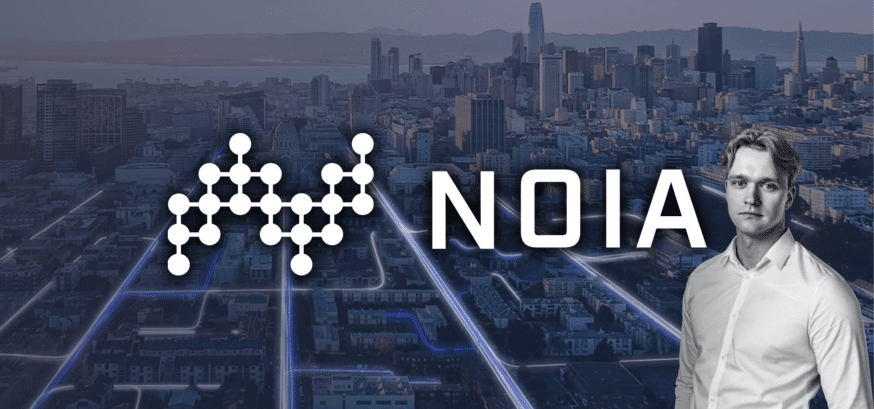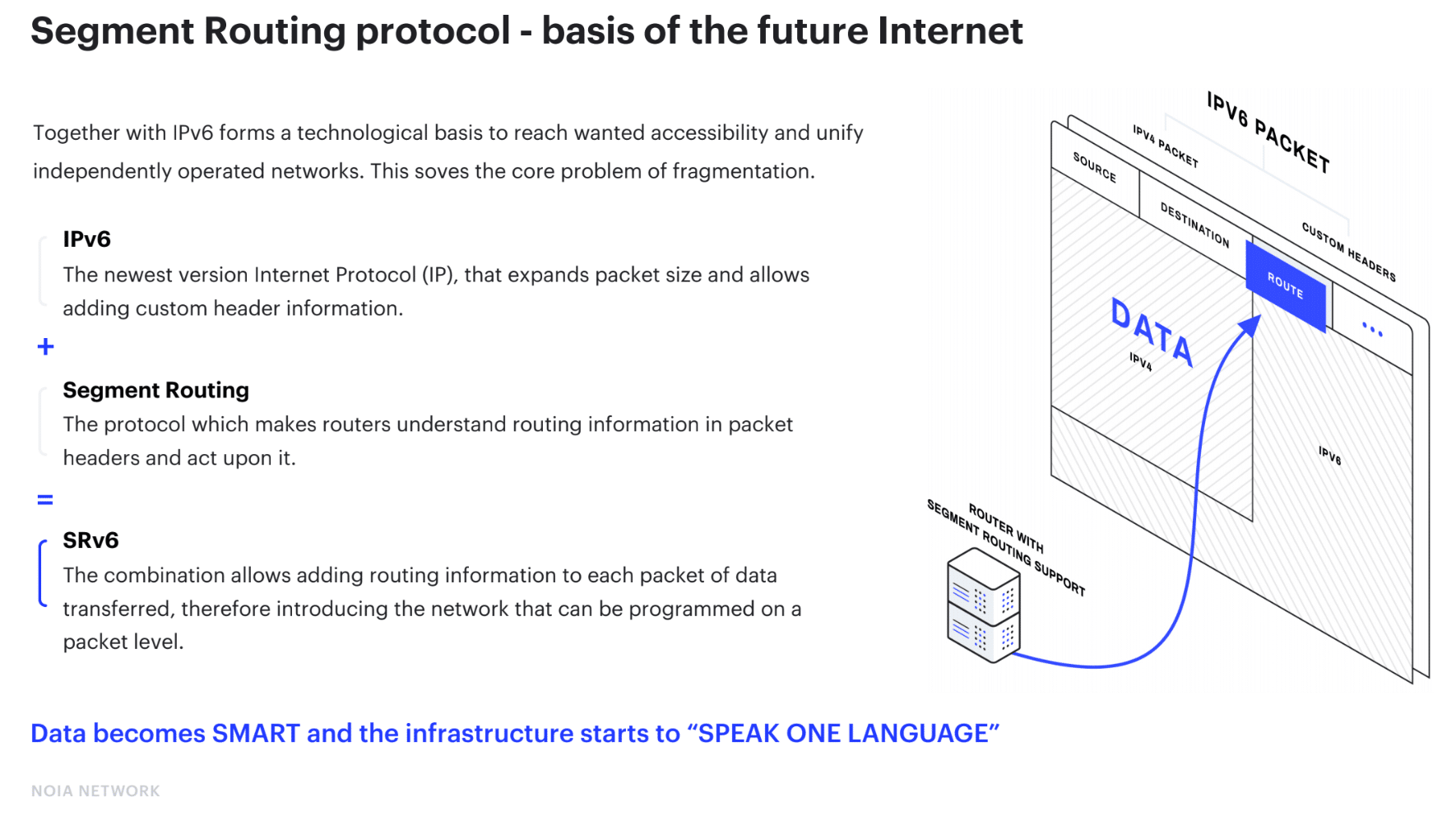When thinking of the Internet, few people dive deep enough to understand how it works. The “Information Superhighway” has created trillions of dollar in value, facilitated the spread of globalization, opened the doors to education for billions, and changed entire generations. However, the Internet, according to the NOIA team, is still extremely inefficient – and they want to change that.
From a bird’s eye view, NOIA has designed a distributed peer-to-peer content delivery network (CDN) administered by a blockchain. The team believes this to be a much more effective solution than the current protocol that runs the Internet.
The problem, as explained by NOIA, is that the Internet as is wasn’t designed to be this way – it just happened. The natural lack of structure led to a fragmentation that is responsible for upwards of $700B a year in outage costs for enterprises according to an IHS study.
We connected with Domas Povilauskas, a Co-Founder at NOIA Network, to elaborate on how he sees NOIA changing the infrastructure of the Internet as we know it.
Let’s talk about the Internet as of today. Most people are online almost 16 hours a day but have little to no idea how it functions. Could you run us through the current Internet architecture and its routing protocols?
It is important to understand that the internet is a network of networks. It is just cables that run across the world, provided by your ISP who then connects to other ISPs and so on. It’s a large tangle of networks using physical cables running across the world. It is operated by thousands of different institutions in order to be functional.
These institutions should have a common protocol. Commercialization of the Internet began with universities then to private ISPs, as a network of networks.
Boarder Gateway Protocol was introduced in 1994. This allows a path from one computer to another including websites to television to social media and essentially anything and everything on the internet. The routing protocol and data currently functions in a series of “hubs.” Currently, users do not have a choice of which hub is used and ultimately, ends up at the main server where the data is hosted.
The problems?
The BGP protocol only works on a very “local view” on the network, sending traffic to those hubs. Using the information from each other, autonomously governed, data is stored across the internet. This doesn’t include packet laws, latest measurements, security features, and is a simple protocol showing a direction towards a destination. No one is responsible for delivering traffic, performance, and non-intelligent routing, specifically.
90% of all internet traffic is routed using BGP. This also results in huge financial losses for major companies and is inefficient.
It costs Technology companies, Enterprises, and Internet Service Providers upwards of $700B. Where does this money go?
An IHS Study is very broad and includes a very broad picture of why internet creates complexity for a lot of companies. Includes direct network and internet outages, for example. It affects productivity, texting, software, slow experiences, services, etc. This is an annual number which becomes exponential.
Companies and enterprises will install and will use private service providers which adds another cost because the public internet can be too risky. These solutions are still not enough. Regardless, at some point, all enterprises are reliant on public internet where their private cannot be covered. So, access points MPLS Protocol which costs hundreds of times more are used but this is also outdated.
Let’s talk about the future of the Internet. How is going online in 10 years going to be different than today?
The programmable Internet is based on the idea of openness, resource sharing, and balancing. Regular Internet users can contribute and use the programmable Internet by sharing their Internet connection. Once NOIA application is installed, the user’s connection will become a part of the new Internet and user will get access to the best Internet connection possible given his Internet plan, location and other details.
This would let users make their internet fast, guarantee the best gaming and television experience and get rewarded for contributing and using the Programmable Internet.
Regular user contributions can bring traffic decentralization and make Internet balanced and effective. This brings more traffic to faster, better networks and fosters competition between Internet Service Providers which leads to innovation and evolution of Internet Infrastructure.
IPV6 expanded the size of data packets. This allows for custom data headers. This adds a place for editing data including routing information. Segment routing is increasing such as Cisco (among others) is doing today. The majority of the hardware will support segment routing over the next 5 to 10 years. There is no technical reason why this is not possible in order to support segment routing. Worldwide segment routing is the future environment and the IPV6 protocol. Currently, there is no such thing as a database internet using BGP protocol.
Editor’s note: In the blog announcement, Bill Norton broke it down into simple terms: “Much like Waze routed cars to alternative routes to bypass congested highways, machine learning will dynamically adjust the topology of contributed network segments to optimize routing for its participants. The entire community benefits from better Internet connectivity, and blockchain handles the settlement between participants.”
We use distributor ledger technology allowing for all segment routing databases and running our nodes. The user experience is exponentially improved by seeing all available connections to use for transit. This is a solid base for programmable internet.
After this is achieved, an economy needs to be created and enabled. By combining all of the aforementioned, our model is a decentralized internet transit exchange, i.e. DITEX. This offers a financial incentive which offers an “opening up” of the internet so segments are open and shared in order to perform “smart routing” with machine learning and algorithms.
Could you tell us a bit about the founding team behind NOIA? Why is this the best team to solve this challenge?
We started a year and a half ago. Our testnet has been performing for about one year in order to release this technology now. Our team has recently added Bill Norton as a late-stage founder. We have a team of experts at the highest level in the U.S. and globally.
How is NOIA going to impact the internet?
We connect different independent networks by programming segment routing language. We are connecting the internet with smart routing and an alternative routing system.
This provides maximum utilization for the internet including safety, security, performance, and solves critical problems associated with the current internet architecture associated with the BGP.
How will Bill Norton impact the progress of the project?
Bill has pushed our project to the major league of Silicon Valley projects. To have him on board means we are doing something significant in the industry.
What is NOIA Cache?
A peer-to-peer content delivery network (CDN). This was released over 6 months ago. CDN is the first application running on the testnet, open-source, etc.
How will NOIA compete with Amazon, Microsoft, and CloudFlare?
These companies privatize their internet. Their internet is private and they still lack solutions in certain regions and countries.
NOIA uses the existing infrastructure. We are democratizing the public internet which spans the globe. In fact, we are offering our services to these companies.
What role will blockchain play in internet decentralization?
A more accurate description is Distributed Ledger. This is the only way for the internet to be decentralized as a public database for this new routing system. This isn’t owned by our company, it is public.
How will NOIA make money?
To utilize Segment Routing, we are developing the software for data packet programming. It’s basically one of the first in the world (or the first) such software available as a service for individuals and Enterprises. This software works in combination with router softwares which supports Segment Routing protocol and this forms a basis for traffic routing in Programmable Internet.
In order to grow the number of users and contributors, NOIA will be focused on providing a good UX/UI in terms of Programmable Internet usage and integration into the existing IT infrastructures.
To do that, we’ll be releasing an application for individual users and businesses. Both applications will give access to Programmable Internet and serve as “gateways”.
We have two categories of customers:
- Individuals: We’re developing an app for every Internet user to speed up their Internet and share their connections to get rewarded.
- Businesses: It essentially will be a SaaS platform which will provide all tools needed to connect all wanted end-points in companies infrastructure and setup, manage, analyze network connectivity. That part we’re planning to monetize.
It’s a good way to differentiate the private business from open-source distributed ledger project. The core of the project is the ledger and the exchange. Those will be decentralized and NOIA company will only get value being a token holder. But in terms of the product, the software itself, the UX/UI part, it will be monetized for Enterprises as a service.
Anything else you’d like our readers to know?
Everyone should understand that NOIA is creating a sustainable token economy revolving around the sharing-and-using internet connection, a next-generation internet. This model is tied to the NOIA token.
Thank you!
Never Miss Another Opportunity! Get hand selected news & info from our Crypto Experts so you can make educated, informed decisions that directly affect your crypto profits. Subscribe to CoinCentral free newsletter now.













